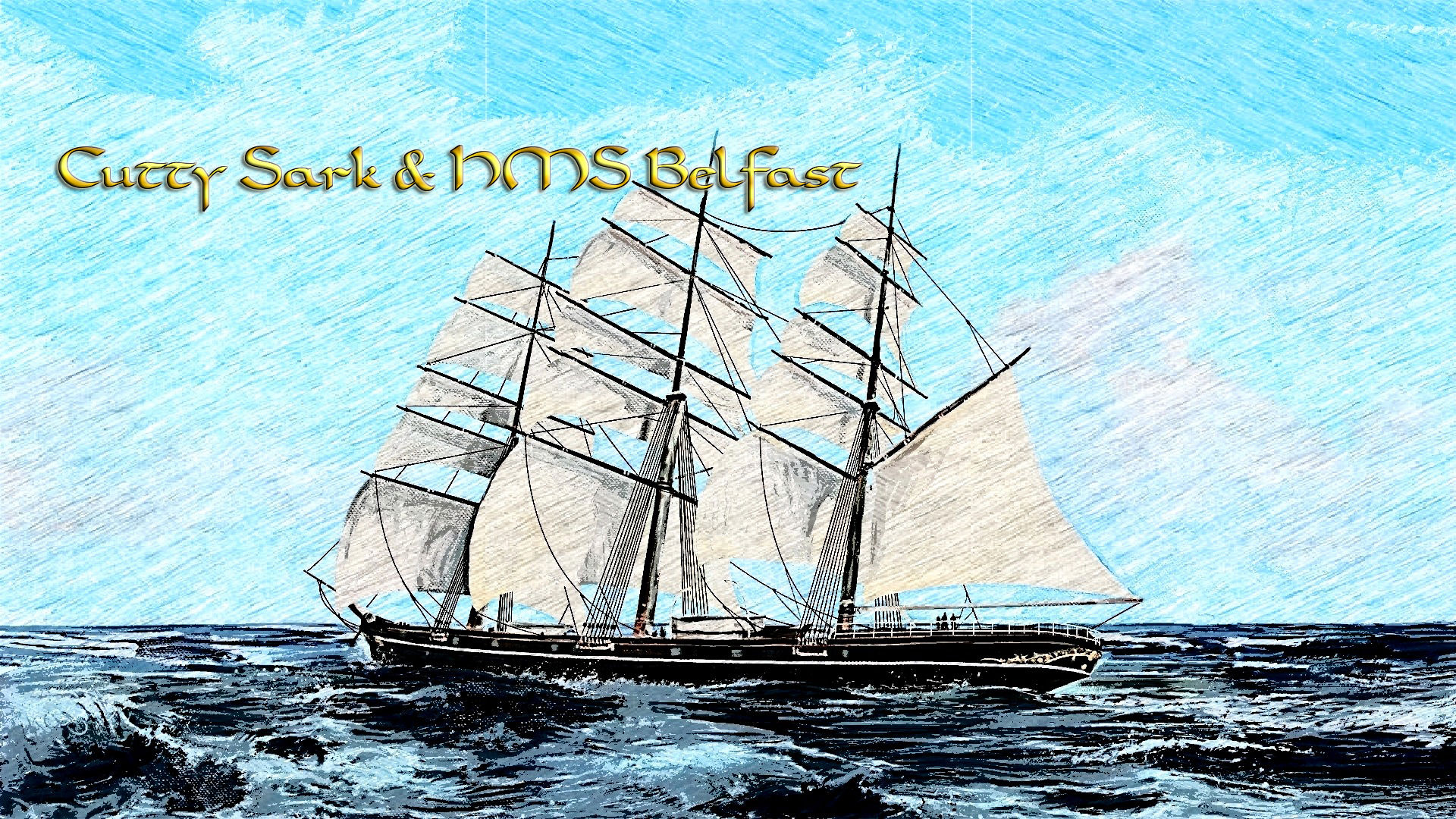
The Cutty Sark is a ship that’s synonymous with the maritime history of Great Britain. The Cutty Sark was an English "clipper class" ship used predominantly to transport tea from China to England. Build in 1869, Cutty Sark was impressively speedy for its time, and as a clipper, it was built for efficiency.
HMS Belfast is a Town-class light cruiser that was built for the Royal Navy. HMS Belfast played an important role during the Second World War. She played a key role in the sinking of the German battle cruiser Scharnhorst and opened fire on the D-Day beaches on 6 June 1944, supporting the landing of British and Canadian troops on Gold and Juno beaches. D-Day ultimately provided the turning point in the Second World War and led to victory in Europe.
 What is the Cutty Sark?Cutty Sark is the world’s only surviving extreme clipper. Clipper ships are marked by three design characteristics - a long, narrow hull, a sharp bow which cuts through the waves rather riding atop - and three raking masts. |
|---|
 What does Cutty Sark mean?Cutty Sark takes its name from a poem by Robert Burns called Tam O’Shanter. It refers to a short nightie worn by one of the main characters in the poem, a young, attractive witch called Nannie. |
 How old is the Cutty Sark?Cutty Sark is 150 years old. During its years as a British merchant ship, Cutty Sark visited sixteen different countries and travelled the equivalent of two and a half voyages to the moon and back. |
 When was Cutty Sark built?Launched on 22 November 1869 in Dumbarton, Scotland, it embarked on its maiden voyage from London to Shanghai on 16 February 1870. On its first voyage, Cutty Sark carried large amount of wine, spirits and beer, and came back from Shanghai loaded with 1.3 million pounds of tea. |
 What is Cutty Sark famous for?Cutty Sark represents the pinnacle of clipper ship design and was one of the fastest ships of its day. |
 HMS Belfast is one of only three remaining vessels from the bombardment fleet which supported the Normandy landings on 6 June 1944 |
 HMS Belfast was launched in 1938 and was originally part of the British Naval troop against Germany during World War II. |
 Ship's bell |
 6 inch forward guns of HMS Belfast |
 Bofors guns in HMS Belfast |
 Gun Operator room |
 Gun Operator room |
 21 inch Mark IX Torpedo |
 21 inch Mark IX Torpedo |
 Communication Room |
 The bleeps, the sweeps and the creeps |
 Radar system |
 Captain's deck |
 Communications Mast |
 HMS Belfast now a floating museum on the Thames, |
 In 1967, it was expected that HMS Belfast would be scrapped but a joint committee of the Imperial War Museum, the National Maritime Museum and the Ministry of Defence was established in a bid to turn her into a museum. |
 Now part of the Imperial War Museum, the ship is a popular tourist attraction and receives more than a quarter of a million visitors a year. |